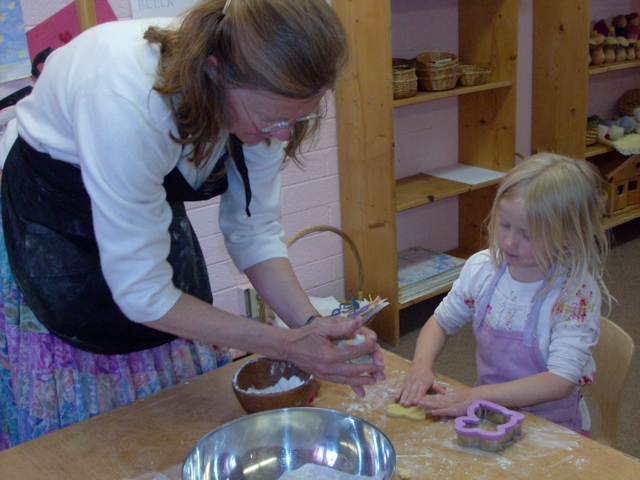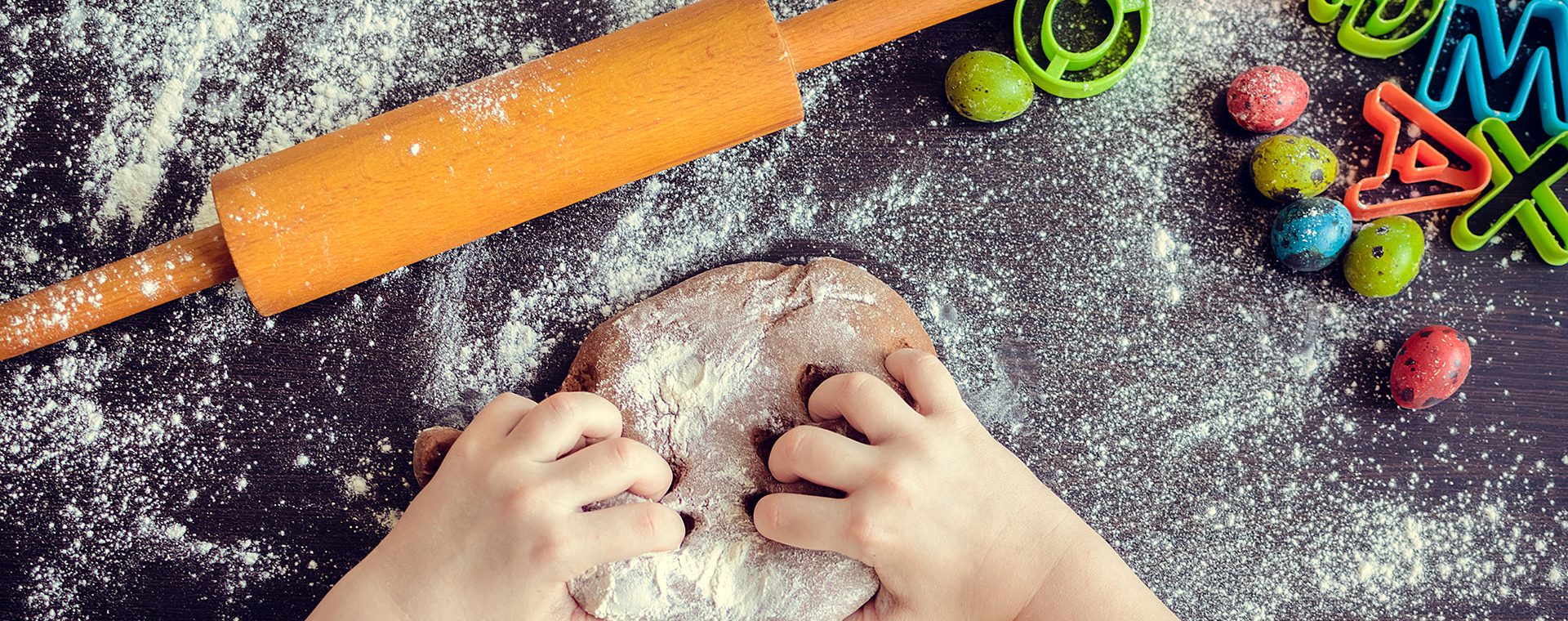Example of a whole-child approach, baking bread in a Waldorf kindergarten
 By Regina Hahn
By Regina Hahn
There are many paths to learning that incorporate a whole-child approach. Waldorf early childhood education is one example of how to meet the learning needs of the young child today through a play-based whole-child approach. Waldorf education does this through an integrated and rich curriculum filled with guided learning and structured free play. In a Waldorf early childhood classroom, language and literacy is nurtured through meaningful experiences of storytelling, puppetry, singing, poetry and verse. Math and science skills are developed through creative and purposeful work activities such as bread making and cooking, block building and woodworking, as well as the care for the environment. Love for nature and respect for the environment are brought through gardening and composting, nature crafts, weekly nature walks, outdoor play, and the seasonal celebration of festivals. Artistic expression is encouraged by daily creative activities such as watercolor painting, drawing, modeling, music and movement, craft and handwork. Most importantly, the young child learns through active engagement of their whole self in imaginative social structured free play.
A living example of this purposeful play is in the weekly activity of bread making I have experienced as a teacher in a Waldorf kindergarten. The children arrive into the classroom and begin their play. The teacher has begun to gather the ingredients needed to make the bread: water, honey, yeast, salt, oil and flour. The grain grinder is set up and some children are already actively hand grinding the wheat and singing the grinding song “Sally Go Round the Sun”. There is one child grinding, one child making sure no grain gets stuck. Several other supervisors are waiting their turn to grind, for it takes many strong friends to turn the wheat to flour. Meanwhile, others have been assisting the teacher to measure and mix the honey, yeast and warm water are now waiting for the bubbling sponge to grow.
The time has come. The yeast has grown and been mixed in the flour. The children’s hands have been washed. Aprons are all on. The table has been sprinkled with flour. Children are ready and waiting as the teacher brings the dough to the table. As the large lump of dough is divided, a portion for each child, they all begin singing the well-known “pat-a-cake” baking song. Rigorously kneading the dough, some children discover that their hands are too sticky and they need more flour. The sifter is taken out and a gentle flour snow begins to cover the table. Rounds of “pat-a-cake” continue to be sung alternating each child’s name while the first letter is written in the flour dust. Now it is time for everyone to get a pinch, of salt. Pinching the dough into little bird nest like bowls each child takes a pinch of salt and sprinkles it into the well. The oil is poured in. Children are laughing and chatting as they squeeze the oil in and it makes funny noises and funny shapes. The organic play-dough now gets transformed into many wonderful things; a dragon, snake, frog, pizza, baby, bird in a nest. The ideas are abundant. Each creation is carefully placed on the baking sheet to grow before it is then baked, filling the classroom with its wonderful aroma.
The fun and messy process of cleaning the table, washing the mixing bowl and sweeping the floor begins. The children discover that many helpers make light the work and the job is complete in no time. Throughout the whole morning every child has been invited and engaged in the bread making. Tomorrow the children will enjoy the fresh baked bread with honey butter for morning snack and any crumb leftovers will be given to the birds or put into the ‘back to the earth bucket’ (the compost pile). It has been my pleasure to see my kindergarten children have this experience in my Waldorf classroom.


